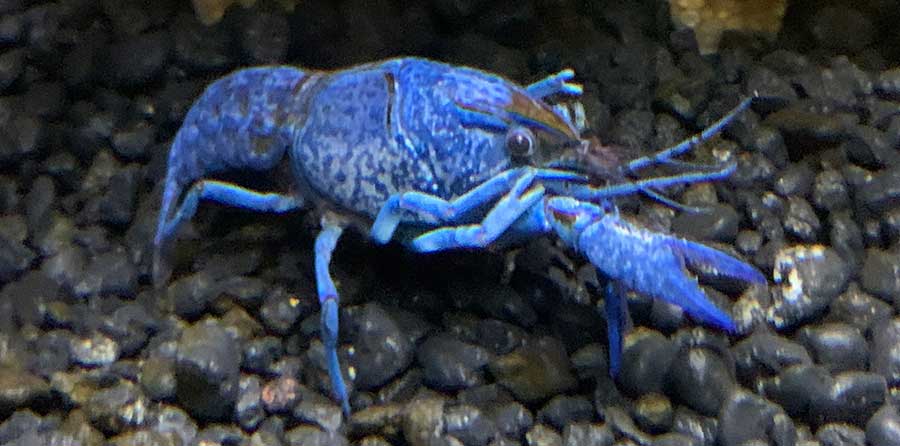The Blue Lobster, also known scientifically as procambarus alleni, and in layman’s terms, as blue crayfish, blue Florida crayfish, electric blue crayfish, and Everglades crayfish, are not really fussy eaters.
While their origin is Florida, these scavengers are increasingly popular aquarium pets.
Unfortunately, even pet store owners who do stock them are unaware of what these spectacular pets eat. Some will even try to sell you something off the shelf, which is fine if that’s what you want to do. But, there are also other things that your crayfish can eat.
So what can I feed my blue lobster?
Blue lobsters in their natural habitat
In their natural habitat, blue lobsters, aka blue crayfish, eat plenty of aquatic plants, algae, dead foliage, snails, smaller fish, and they have also been known to consume the decaying flesh of animals that die in or close to the water.
Aside from a few of these, you may still be wondering, well, what can I feed my blue lobster? It’s a great question because you’re not likely to forage for dead animals along the highway or gather algae from ponds.
Diet for baby blue lobsters as aquarium pets
For baby blue lobsters, I do use fish flakes initially for growth purposes.
Go ahead and give them a large flake in the morning while you make breakfast, and then again in the evening when you cook supper. However, you don’t want to overfeed your baby blue lobsters or even adult ones.
Also, make sure you read the label of any product and if you see copper as an ingredient, do not buy it, because this will kill your blue lobster.
Additionally, you surely do not want to raise your blue lobster on fish flakes for five to six years, which is the typical lifespan. If you care for them correctly.
Now you know what baby blue lobsters eat, what can I feed my blue lobster when it is an adult is your next question, right?
Food for adult blue lobsters
I feed my adult blue lobsters algae pellets because they absolutely love them.
But don’t get carried away with these, because, just like you, a variety of foods are important for quality health. Because of this, go ahead and give them their vegetables such as green beans, zucchini, carrots, peas, and spinach.
Also, whenever you have leftover chicken, feel free to give it to them but avoid spicy chicken.
Finally, you can also feed them fathead minnows or small goldfish.

